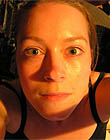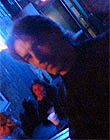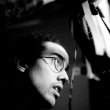|
|
This topic comprises 5 pages: 1 2 3 4 5
|
|
Author
|
Topic: What is going on with this trend of 'scope' sequels to 'flat' movies?
|
Michael Coate
Phenomenal Film Handler

Posts: 1904
From: Los Angeles, California
Registered: Feb 2001
|
 posted 05-25-2010 10:12 AM
posted 05-25-2010 10:12 AM




What is going on with this trend(?) of "scope"-formatted sequels to movies that were originally "flat"? The new "Shrek" sequel, for example, is scope and, if I recall correctly, the previous "Shrek" movies were flat. And I recently saw some footage from Oliver Stone's new "Wall Street" sequel, with all indications being that it will be in scope (the original was flat).
As well, some recent remakes and reboots have followed this pattern (e.g. "Fame," "A Nightmare On Elm Street," and the Christopher Nolan "Batman" movies).
I support the idea that the filmmaker (artist) ought to be able to make whatever creative choices they wish, but I must admit I dislike it when they switch from flat to scope or vice versa when making a sequel. The first time I recall noticing this in a new, first-run movie was in 1986 when I saw "Aliens." The next year I noticed "Beverly Hills Cop II" did it. A couple years later: "Lethal Weapon 2."
Changing the aspect ratio in a subsequent entry in a film series often snaps me out of the movie. (Similarly, I'm not particularly fond of watching dubbed movies nor am I receptive to returning characters in a sequel being portrayed by a different actor.)
I should emphasize that by "scope," in this case, I'm referring strictly to the release format, not the origination. But...bringing origination into the mix, some recent sequels, prequels and reboots have been shot in High-Def or Super-35 whereas their predecessors may have been shot anamorphic. ("Casino Royale," "Star Wars"...). This bothers me, too, though less so than my other example because at least in these cases the aspect ratio remained the same, and it's the aspect ratio that, in a sense, establishes the "window" of the "world" the characters inhabit, and when that window is changed it is as if the characters are wandering around a different world than before.
Am I just being weird here, or do some of you share my view?
| IP: Logged
|
|
Elise Brandt
Expert Film Handler

Posts: 160
From: Kuusankoski, FIN/ Kouvola, Finland
Registered: Dec 2009
|
 posted 05-25-2010 10:32 AM
posted 05-25-2010 10:32 AM




Wow. I have seriously never, ever even noticed that. Ever. But I tend to take one movie at a time, I can't remember which ones were flat and which were scope after they're done playing. Only in rare cases I might remember and even then it's usually when there's been a problem to correct with that movie so I've had to check multiple times.
I for one think that each movie should be _a_movie_ in the first place and only secondly a sequel to something else. They should all, no matter if it's the umpteent sequel, in my opinion, be able to stand on their own and represent themselves, not the series.
Different directors, different actors, different formats... the only thing I think I notice is the actors ![[Big Grin]](biggrin.gif) if I really like (or hate) a character, I do usually dislike to see it done by another actor, but... the latecomes may well do it better! You only know if you get over the initial "no..." and give it a go. if I really like (or hate) a character, I do usually dislike to see it done by another actor, but... the latecomes may well do it better! You only know if you get over the initial "no..." and give it a go.
Ashamed to admit this, I truly am, but I liked the Victoria character in the Twilight series, done by Rachelle Lefevre. Bitchy enough. And for the next movie I notice she's been swapped for Bryce Dallas Howard. Initial reaction; same as any teenage fan of the series. (like, eeeewwhhh!!) Then remembered my age and to act accordingly, to see how she does it. I'm sure she'll be just as bitchy.
| IP: Logged
|
|
|
|
|
|
|
|
|
|
Bobby Henderson
"Ask me about Trajan."

Posts: 10973
From: Lawton, OK, USA
Registered: Apr 2001
|
 posted 05-25-2010 01:09 PM
posted 05-25-2010 01:09 PM




Aspect ratio changes for movies in the same series is not all that common, but it is nothing new either. I don't care for the lack of consistency unless there is a good reason for the deviation. If the original movie is shot flat, then I think all of its sequels should be shot in the same aspect ratio.
The same thing goes for the shooting method. If the original movie is shot anamorphic, then all of its sequels should be filmed anamorphic as well. I don't like it when one movie is shot with anamorphic lenses and then a sequel is shot in Super35. Anamorphic has a very differnt look from spherical shooting, especially when depth of field gets narrow.
Some odd examples:
The Hustler was shot in CinemaScope, in black and white. Its sequel, The Color of Money, for which Paul Newman finally won as Oscar, was shot flat and in color. Even more funny, The Color of Money had 70mm blow-up prints.
Chinatown was shot in anamorphic Panavision. The Two Jakes was composed flat, yet was another odd 1.85:1 movie with 70mm blow up prints.
The original installment of Blade was shot in anamorphic 'scope, but Guillermo del Toro shot Blade II flat. Blade: Trinity was shot in Super35. Guillermo del Toro filmed the first Hellboy movie flat. He also directed the sequel, but shot that one in Super35 instead.
Alien and Aliens is one of the more glaringly obvious examples due to the enduring popularity of those films. At least both had 70mm blow up prints.
The first Spiderman movie was shot flat. Then Sam Raimi filmed the two sequels in Super35. He even made some use of 65mm cameras for the L-train sequence in Spiderman 2.
I could go on and on.
Back in the late 1980s the flat format had a tyrannical dominance over aspect ratio choices thanks in part to the influence of the booming VHS home video industry. Even a lot of movies shot in 'scope during the 1980s were careful to confine much of the important action into a safe pan and scan zone. Scope movies that made good use of the wide frame (I think Ghostbusters is a good example) were rare in the 1980s.
Today, the 'scope format has a tyranny of its own on major movie releases. Super35 has allowed many productions to fill the screen at the movie theater and fill the screen on home video. Unfortunately with trying to be all things to all movie distribution mediums Super35 is prone to bland compositions. With anamorphic you're locked into a specific frame shape. I also believe the 'scope format is being overused due to pop cultural fashions. Lots of music videos and TV commercials are shot with anamorphic lenses and letter-boxed. The novelty of doing this wore off years ago.
I also wonder if the 2.39:1 ratio is being chosen to save a few pennies on rendering time and conserve disc space. A flat movie in 2K is 1998 X 1080 pixels, a total of 2157840 pixels. A 'scope movie in 2K is 2048 X 852, a total of 1744896 pixels -412944 fewer pixels. Bump things up to 4K levels and that difference gets even bigger.
| IP: Logged
|
|
|
|
|
|
|
|
|
|
|
|
|
|
|
|
|
|
|
|
All times are Central (GMT -6:00)
|
This topic comprises 5 pages: 1 2 3 4 5
|
Powered by Infopop Corporation
UBB.classicTM
6.3.1.2
The Film-Tech Forums are designed for various members related to the cinema industry to express their opinions, viewpoints and testimonials on various products, services and events based upon speculation, personal knowledge and factual information through use, therefore all views represented here allow no liability upon the publishers of this web site and the owners of said views assume no liability for any ill will resulting from these postings. The posts made here are for educational as well as entertainment purposes and as such anyone viewing this portion of the website must accept these views as statements of the author of that opinion
and agrees to release the authors from any and all liability.
|

 Home
Home
 Products
Products
 Store
Store
 Forum
Forum
 Warehouse
Warehouse
 Contact Us
Contact Us




 Printer-friendly view of this topic
Printer-friendly view of this topic






![[Big Grin]](biggrin.gif) if I really like (or hate) a character, I do usually dislike to see it done by another actor, but... the latecomes may well do it better! You only know if you get over the initial "no..." and give it a go.
if I really like (or hate) a character, I do usually dislike to see it done by another actor, but... the latecomes may well do it better! You only know if you get over the initial "no..." and give it a go.













